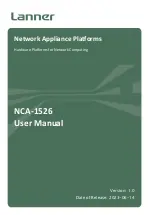
Chapter 8 Configuring VLANs
How the VMPS Works
8-54
Catalyst 2900 Series XL and Catalyst 3500 Series XL Software Configuration Guide
78-6511-05
VMPS Database Configuration File
The VMPS contains a database configuration file that you create. This ASCII text
file is stored on a switch-accessible TFTP server that functions as a VMPS server.
The file contains VMPS information, such as the domain name, the fall-back
VLAN name, and the MAC address-to-VLAN mapping. A Catalyst 2900 XL or
Catalyst 3500 XL switch running this software release cannot act as the VMPS.
Use a Catalyst 5000 series switch as the VMPS.
The VMPS database configuration file on the server must use the
Catalyst 2900 XL and Catalyst 3500 XL convention for naming ports. For
example, Fa0/5 is fixed-port number 5.
If the switch is a cluster member, the command switch adds the name of the switch
before the Fa. For example, es3%Fa02 refers to fixed 10/100 port 2 on member
switch 3. These naming conventions must be used in the VMPS database
configuration file when it is configured to support a cluster.
You can configure a fallback VLAN name. If you connect a device with a MAC
address that is not in the database, the VMPS sends the fallback VLAN name to
the client. If you do not configure a fallback VLAN and the MAC address does
not exist in the database, the VMPS sends an access-denied response. If the
VMPS is in secure mode, it sends a port-shutdown response.
The following example shows a sample VMPS database configuration file as it
appears on a Catalyst 5000 series switch.
!vmps domain <domain-name>
! The VMPS domain must be defined.
!vmps mode { open | secure }
! The default mode is open.
!vmps fallback <vlan-name>
!vmps no-domain-req { allow | deny }
!
! The default value is allow.
vmps domain WBU
vmps mode open
vmps fallback default
vmps no-domain-req deny
!
!
!MAC Addresses
!
vmps-mac-addrs
!
















































